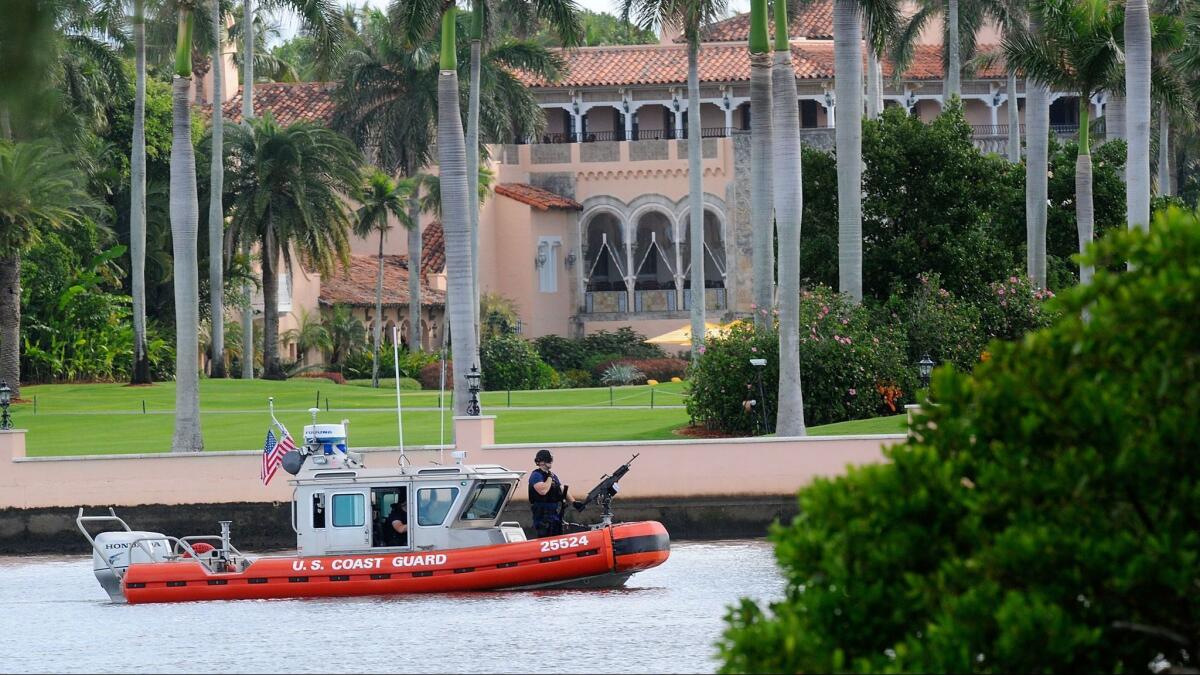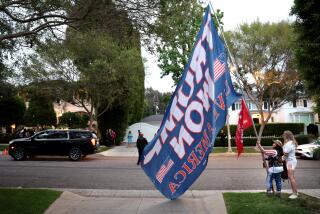Trump’s Florida visits increase terrorism risk, Palm Beach County says

President Trump’s frequent visits to South Florida make the area a high-risk target for terrorism, one that justifies more money from the federal government, Palm Beach County’s top law enforcement agency says.
The Palm Beach County Sheriff’s Office is pushing for the federal government to boost its funding for terrorism prevention by designating Mar-a-Lago — Trump’s private club — a “high-risk critical asset,” according to a memo obtained by the South Florida Sun Sentinel.
“Having the president governing from our county in an area bordered on water on each side in a facility never built to offer the level of protection the president requires is a challenge,” Palm Beach County Commissioner Dave Kerner said. “We have to continue to supplement our local response.”
Trump is making his 12th visit to Mar-a-Lago this weekend since becoming president. In South Florida, anti-terrorism grants have been used to purchase automated license plate readers, cameras, mobile command centers, night-vision goggles, rescue boats and other specialized equipment.
While Mar-a-Lago presents security challenges, Henry Willis, a senior policy researcher with the nonprofit think tank Rand Corp., said he doesn’t think it dramatically raises the safety risk for people living in South Florida given recent trends.
“What we tend to be seeing is many of the most recent attacks are on less defended public spaces and soft targets,” he said.
When the federal government awards anti-terrorism funds, one factor officials examine is the presence of symbolic targets and landmarks. These dollars are distributed through the Department of Homeland Security’s Urban Area Security Initiative.
Homeland Security handed out $580 million in Urban Area Security Initiative funds in the 2017 budget year, including about $5.2 million for South Florida. New York City received the largest grant at $178 million.
Palm Beach County has long lagged behind Broward and Miami-Dade counties in Homeland Security grants, according to statistics kept by the Florida Department of Law Enforcement.
Since 2005, agencies in Miami-Dade and Broward counties have been awarded a combined $140 million through the Urban Area Security Initiative, according to state reports. Palm Beach County agencies have gotten just over $1 million.
Homeland Security looks at a variety of factors when assessing a city’s threat level, Willis said.
Those factors include the amount of crucial ports, airports, stadiums and other infrastructure, the number of symbolic targets and the number of people living in the area on terrorism watch lists, he said.
Mar-a-Lago would likely fall under the high-risk designation, which could include other landmarks such as the White House, Willis said.
Funding decisions have been controversial.
Orlando — the site of the Pulse shooting in 2016 — hasn’t received anti-terrorism funds through the Urban Area Security Initiative since 2014. Las Vegas leaders argued after the mass shooting there last year that Homeland Security undervalued the city’s threat risk, leading to insufficient funding.
In a March news conference, West Palm Beach Mayor Jeri Muoio said her city had seen a spike in cyberattacks, which she attributed to the increased attention the region was receiving because of Trump’s visits.
The city needs to spend millions to update its equipment and hire more emergency personnel, she said.
The Palm Beach County Sheriff’s Office has served as the lead agency supporting the U.S. Secret Service in protecting Trump’s estate since Trump was elected.
More than 1,300 employees have racked up over 40,000 hours protecting Trump during his visits, an expense that has exceeded $3 million, according to the Sheriff’s Office. Ultimately, the county received reimbursement for those expenses in a special appropriation through the Federal Emergency Management Agency.
But sheriff’s officials say additional Homeland Security funding could help offset future costs. They asked for the high-risk designation in an application to receive reimbursement for overtime costs associated with protecting the president.
Swisher writes for the South Florida Sun Sentinel.
More to Read
Sign up for Essential California
The most important California stories and recommendations in your inbox every morning.
You may occasionally receive promotional content from the Los Angeles Times.





